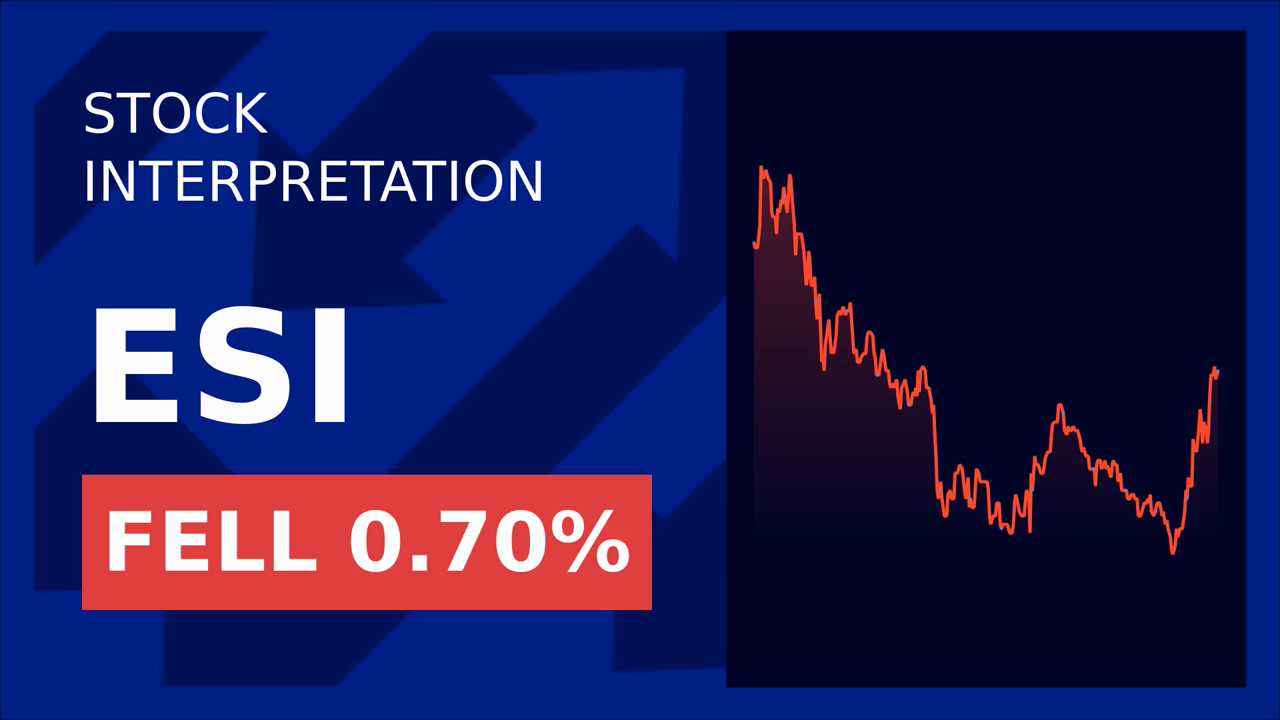Element Solutions Inc. Navigates Trade Headwinds with Resilient Q1 Growth
Element Solutions Inc. (ESL) delivered a robust Q1 2025 performance, driven by its Electronics segment’s surge in sales and strategic portfolio moves. Despite lingering macroeconomic uncertainty, the company reported net income growth of 75% to $98 million, fueled by a $72.1 million gain from the sale of its MacDermid Graphics Solutions (MGS) division. This decision to focus on high-margin electronics applications underscores management’s resolve to prioritize sectors with long-term resilience.

Core Electronics Segment Dominates Growth
The Electronics segment, which now accounts for 66% of total revenue, saw sales jump 13% year-over-year to $394 million. This expansion was fueled by soaring demand from data centers and AI infrastructure, with no signs of slowdown in semiconductor customer activity. Management emphasized the diversification of its power electronics customer base and new product launches as key drivers. Notably, adjusted EBITDA in this segment rose 9% on a constant currency basis, highlighting margin expansion despite macroeconomic headwinds.
Strategic Divestitures and Debt Reduction
The sale of MGS—a move to streamline operations—generated $323 million in net proceeds. This capital enabled Element to reduce total debt by $200 million, lowering its net debt to $1.137 billion. The cash balance swelled to $499 million, a 39% increase from Q4 2024, reflecting disciplined capital allocation.
Industrial & Specialty Segment Struggles
The Industrial & Specialty division faced headwinds, with sales dropping 12% to $199 million. The MGS sale accounted for 6% of this decline, while softer end-market demand contributed the remainder. Adjusted EBITDA fell 8% to $40 million, though constant currency performance was less severe. Management attributed the weakness to broader industrial sector softness, a trend mirrored across peers in industrials and materials sectors.
Tariffs and Trade Policy: A Double-Edged Sword
CEO Benjamin Gliklich highlighted escalating trade tensions as a key risk, noting that tariffs and potential new levies have increased operational complexity. While localized sourcing and manufacturing networks aim to offset cost pressures, demand-side impacts remain uncertain. For instance, hyper-scalers (e.g., cloud infrastructure providers) are a bright spot, but geopolitical tensions in regions like Ukraine and the Middle East could disrupt supply chains.
2025 Guidance: Caution Amid Resilience
Element maintained its full-year Adjusted EBITDA guidance of $520–540 million but acknowledged elevated risks. Q2 guidance of $120–125 million reflects the MGS sale’s impact and cautious assumptions about tariff-driven demand shifts. Free cash flow is expected to remain robust, supported by a 100% fixed-rate debt structure and reduced capital expenditures ($11 million in Q1).
Valuation and Risks
At a market cap of $5.54 billion, Element trades at 11.4x its midpoint 2025 EBITDA guidance. While this is reasonable for a cyclical industrial player, investors must weigh risks:
- Tariff Exposure: Potential margin pressure if trade disputes escalate.
- Geopolitical Volatility: Supply chain disruptions in key markets.
- Currency Fluctuations: A weakening dollar reduces FX headwinds but adds uncertainty in foreign markets.
Conclusion: A Cyclical Play with Strategic Convictions
Element Solutions’ Q1 results reaffirm its ability to navigate turbulent markets through strategic divestitures and a focus on high-growth electronics. The 13% sales surge in its core segment, coupled with a $200 million debt reduction, positions it well to weather near-term risks. However, investors must remain vigilant about tariff-driven demand shifts.
The company’s 16.5% net income margin—a 680 basis point improvement—signals operational efficiency, while its $499 million cash balance provides a buffer against macro shocks. Provided data center and AI investments remain robust, Element’s valuation appears compelling at current levels. Yet, with geopolitical risks and trade policy uncertainties elevated, this is not a defensive play but a cyclical bet on technology-driven demand.
In summary, Element Solutions’ execution in Q1 underscores its transformation into a leaner, electronics-focused entity. Investors seeking exposure to the AI and data center boom may find value here, though they must accept the cyclical nature of its business and the risks inherent in global trade dynamics.










